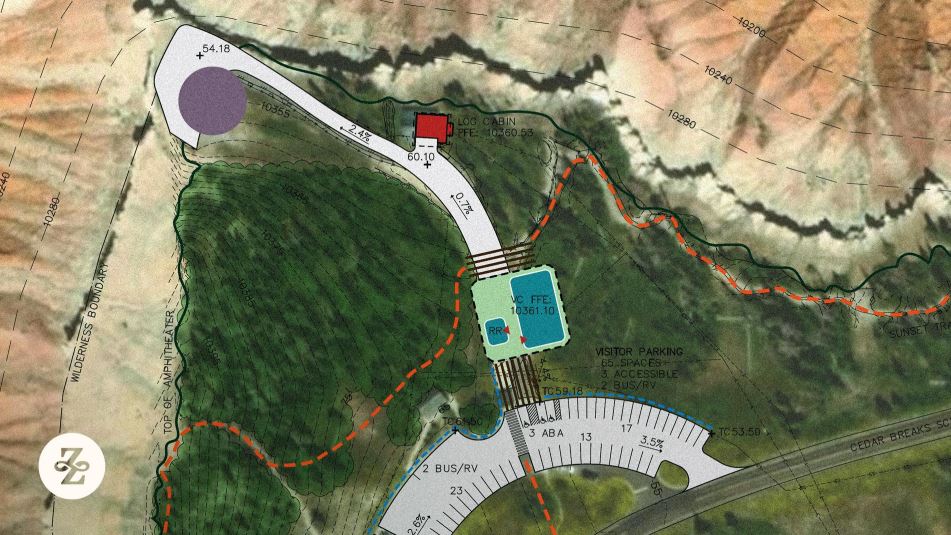CEDAR CITY— Cedar Breaks National Monument officials are finalizing plans for a new visitor contact station to replace the small cabin they’ve been working out of for nearly 50 years.
Park staff have been providing visitor information out of the 650-square-foot ranger station at Point Supreme since 1972. The cabin only has room for a small book sale area, one exhibit and a handful of people, and the park has struggled to provide for its nearly 700,000 annual visitors.
“On a busy summer day, people can’t even get in. Most people stick their head in, see it’s packed shoulder to shoulder, and they leave,” Superintendent Kathleen Gonder said.
The park, along with their nonprofit partner, the Zion National Park Forever Project, and Iron County, have been working to design a new visitor contact station that will be located at Point Supreme near the original cabin, which will remain open to the public for interpretive use. Park officials aren’t sure exactly what they will use the space for, but early ideas include a focus on pioneer history or junior ranger programs.
“We haven’t determined what stories will be told in that area yet, but that will be coming along as we are working on the building. The possibilities are just very exciting,” Gonder said.

The new center is being funded by the Forever Project, Iron County and the National Park Service and is estimated to cost over $1 million.
The project was selected as one of the NPS Centennial Challenge projects in 2015, in which the NPS leveraged $68 million in funding from Congress to match selected parks’ contribution to their projects on a one to one basis, Maria Twitchell, executive director of the Cedar City, Brian Head Tourism Bureau, said.
“We wanted to be right in there competing for those dollars because it was a big priority getting this bigger station so that we could serve the visitor public,” she said. “It was extremely competitive, but I think we had a strong application.”
The park won’t know the exact cost of the project until after their designs have been finalized.
Last year, Iron County awarded the park a $300,000 two-year grant from their restaurant tax fund to help pay for the design phase of the project, allowing them to prepare documents to submit to the NPS headquarters for approval.
The Forever Project is also helping to fund the contact station, having set aside $700,000 for the project already,” Mark Preiss, director of the Zion Forever Project, said.
The nonprofit identified the project in both of its 2018 and 2019 field guides, and will begin actively looking for partners to fund the project later in the year once the final cost has been identified.
“What we hope it will do, and what we anticipate it doing, is extending and expanding the visitor experience within this monument,” Preiss said.

Once the designs are finalized next year, the park will award a contract with a construction company and begin building the center in 2021. It should take around two years to complete and is projected to open by the end of 2022, Gonder said.
The new visitor contact station will be about 2,800 square feet, and will include a book store, a large exhibit area and new restrooms.
Fee stations on the road will be moved inside the new center.
Gonder hopes to include a wide variety of information in the interpretive area of the center, mainly focusing on the geology of Cedar Breaks, how it was formed and what its role is in the Grand Staircase, as well as talk about the many species of plants and animals.
“I think a really big important thing in a visitor contact station like this … is it will give a sense of place as opposed to just a series of pullouts along the highway,” Gonder said.
Also furthering the interpretive efforts will be a 1,000-square-foot covered space for interpretive rangers to hold longer programs and activities, as well as offer a place for visitors to shelter in case of a storm.
It will also give them a place to store telescopes and allow them to host additional night sky programs in the International Dark Sky Park.
Email: [email protected]
Twitter: @STGnews | @MikaylaShoup
Copyright St. George News, SaintGeorgeUtah.com LLC, 2019, all rights reserved.